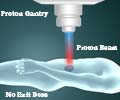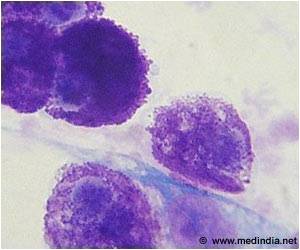- Iridium-based compound that caused destruction of dinosaurs may be used to target and destroy cancer cells.
- Laser activation causes the metal to react and fill cancer cells with poisonous oxygen monoxide which kills the cells.
- The highlight of the iridium-based therapy is that there is no damage caused to healthy tissue.
Iridium
The world’s most corrosive resistant metal and the second densest metal—iridium was discovered in 1803. It comes from the same family as platinum and is hard, brittle and yellow in color. While it is rare on earth, it is found in abundance in meteoroids. A large amount of iridium was found on the earth’s crust believed to be around 66 million years old. This lead to the theory that iridium came to earth with an asteroid that caused the extinction of dinosaurs.Iridium in cancer therapy
Photo-chemotherapeutic effect of two strongly luminescent iridium (III) complexes, [Ir(C,N)2(S,S)] and [Ir(C,N)2(O,O)] were studied. Photo-chemotherapy uses laser light to activate particles that target cancer cells. It is growing field of cancer treatment that is both effective and non-invasive. The iridium-organic material compound becomes activated when a laser light hits its light-reactive coating. The laser light is shown through the skin on the cancerous region. When active, the compound transfers enough energy to convert the oxygen in the cells to singlet oxygen or oxygen monoxide which is poisonous for the cancer cells and kills them. Since oxygen monoxide is short lived and has a short diffusion distance, the healthy cells around the cancer do are not damaged by the cytotoxic effect."This project is a leap forward in understanding how these new iridium-based anti-cancer compounds are attacking cancer cells, introducing different mechanisms of action, to get around the resistance issue and tackle cancer from a different angle." co-author Cookson Chiu said.
Other significant findings from the study
When red laser light was used to attack a spheroid lung cancer cell model, it was observed that the iridium-organic compound penetrated to all layers of the cancer and killed the entire tumor. It was also proved that the therapy does not harm healthy cells and is safe to use.The study, for the first time has also identified what proteins of the cell the cancer treatment majorly attacks by using state-of-the-art ultra-high resolution mass spectrometry. Upon analyzing huge amount of proteins in the cancer cell, it was found that the iridium compound damaged heat shock proteins and proteins involved in glucose metabolism, the key molecules in cancer.
References:
- Cancer cells destroyed with dinosaur extinction metal - (https://www.eurekalert.org/pub_releases/2017-11/uow-ccd110217.php)
- Zhang, P., Chiu, C. K. C., Huang, H., Lam, Y. P. Y., Habtemariam, A., Malcomson, T., Paterson, M. J., Clarkson, G. J., O'Connor, P. B., Chao, H. and Sadler, P. J. (2017), Organoiridium Photosensitizers Induce Specific Oxidative Attack on Proteins within Cancer Cells. Angew. Chem. Int. Ed.. doi:10.1002/anie.201709082
















